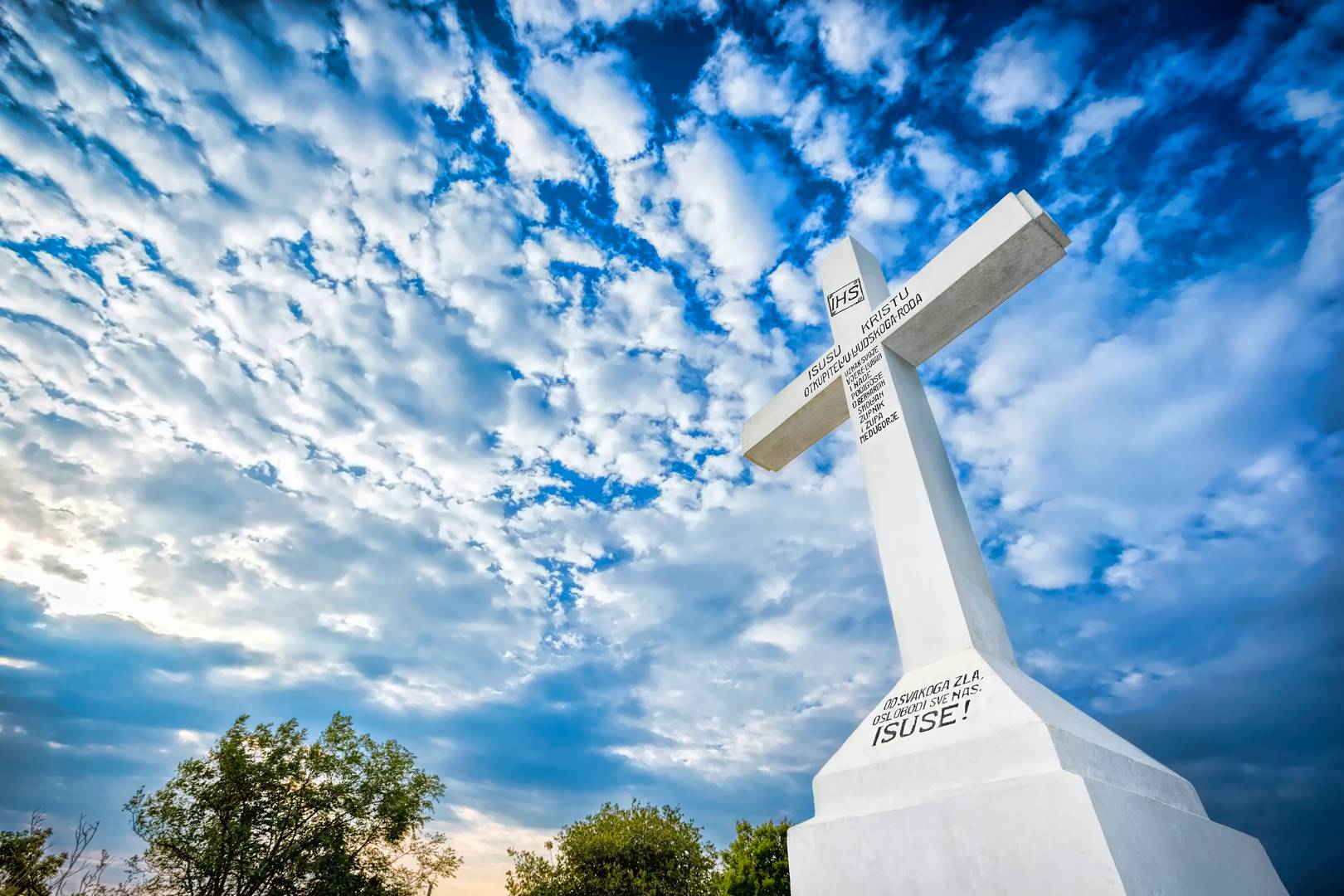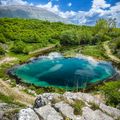Mountain of the Cross
Most pilgrims call Krizevac, The Mountain, or Mt. Krizevac and its fame began long before the apparitions of Our Lady to the children at Podbrdo. The miracles and phenomena, which have been witnessed, are almost as famous as that taking place elsewhere in Medjugorje. Hill or mountain it is a tough climb, usually attempted in the early morning or late afternoon. Stations of the Cross line the path up the mountain and give a rest respite as people stop to pray. It is probably not so much the steepness of the climb that is so daunting but the many great boulders to be scrambled up or over. At times I found some of these rocks almost impossible yet elderly people well into their eighties were climbing with me. The more able are always waiting to lend a hand when necessary and nobody complains if a group is held up because of the slowness of others. The top is 520 metres above sea level and commands a breathtaking view in all directions. Before the erection of the cross it was called Sipovac.
The local legend is that in early 1933, a Papal Holy Year, Pope Pius XI dreamed of a cross on the highest hill in Herzegovina. The parish priest, Father Bernardin Smoljan, was told of this revelation and shared it with the people, who immediately began the tremendous task of erecting the cross. It only took a month and a half to erect the cross but it was very difficult labour. The villagers had to struggle up the steep, rocky mountainside with water, lime, cement, iron rods and sand often strapped to their backs.
The cross was completed in March 1934 to commemorate the 1900th anniversary of the cross and Passion of Christ. The name Sipovac was then changed to Krizevac, which means 'Mountain of the Cross'. Father Smoljan wrote in the parish chronicle that relics were obtained from Rome - pieces of the cross that the Empress Helen had discovered in the fourth century, which are revered as from the cross on which Christ was crucified, were built into the intersection of the arms.
Originally fourteen simple wooden crosses were placed beside the path leading up the hill of Krizevac, so that the people could perform the of the Way of the Cross, as they climbed the almost impassable path. However in 1988, bronze reliefs, sculptured by Italian sculptor Carmelo Puzzolo, were placed in the rocks beside the crosses and a fifteenth placed beneath the cross of Krizevac showing the resurrection. These stations weigh at least 150 kg each and were carried up the hill and placed in their position by the young people of Medjugorje. Many miracles have been claimed to have taken place at the cross and as with the sun it has been known to spin, pulse and throw off light. The word M I R (peace) has been reported in the sky above Krizevac and others have reported the cross disappearing for a time from vision. In 1988 the foot of the cross was reinforced and once again several tons of cement, sand and water had to be carried to the top of the hill. The locals and pilgrims gladly did this.











Ken Piros 24/11/2014 11:03
Very nice work !